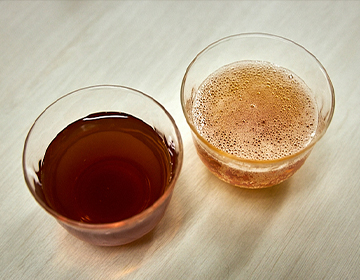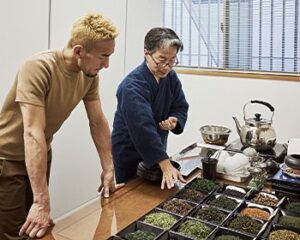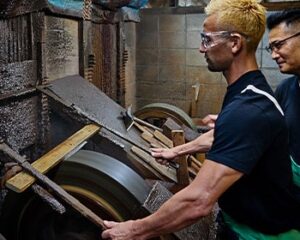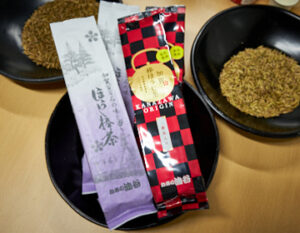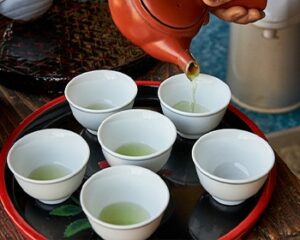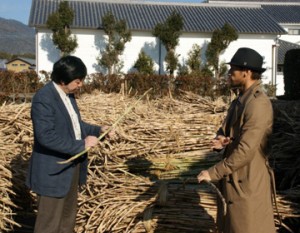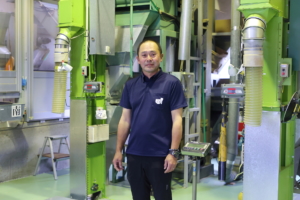Fully fermented tea “Gosekicha” for good health
There are many types of tea in Japan, but a rare fermented tea is produced in Otoyo-cho, Nagaoka-gun, Kochi Prefecture, in the middle of Shikoku. Goishi tea, a fully fermented tea that has been attracting attention in recent years as a health food rich in lactic acid bacteria, has been produced for more than 400 years in this mountain town rich in nature.
It is said that Goishi tea was introduced from China about 400 years ago. It is characterized by its unique flavor produced through a two-step fermentation process. At its peak, more than 100 tons were produced, but by the end of the Showa period, only one house was producing it, and it was in danger of disappearing for a while. But a cooperative was formed to preserve this traditional tea, and now four farmers and one corporation make Goishi tea.” (Yuji Yoshimura, Otoyo Town Goishi Tea Cooperative)
Take a sip of Goishi tea and a slightly peculiar sour taste fills your mouth. It tastes similar to pu-erh tea, a fermented Chinese tea, but it has a mellower taste, and as you get used to the sourness, the deeper taste becomes addictive. The vegetable lactic acid bacteria contained in abundance by the two-step fermentation is said to be 23 times more than that in Pu-erh tea, and since vegetable lactic acid bacteria work in the body without losing out to other microorganisms, it has a beneficial effect on intestinal regulation, hay fever, flu prevention, hyperlipemia, inhibition of arteriosclerosis, and lowering of blood pressure. The effects of plant lactobacilli have been announced at academic conferences and other occasions.
Tea that can only be made in Ootoyo Town, Kochi Prefecture
While black tea, a type of fermented tea, undergoes oxidation fermentation, Goishi tea is fermented using microorganisms. First, tea leaves are placed in large barrels along with their branches, steamed, then the branches are removed, and the leaves are spread out on mats to allow air to circulate and mold to form. In the second stage, the leaves are placed in wooden barrels for fermentation. The tea leaves layered in wooden barrels resemble “tea pickles.” These are then cut into small pieces and sun-dried to complete the Goishi tea. Due to the fermentation process using microorganisms, Goishi tea can only be made using the mats and wooden barrels from Ootoyo Town in Kochi Prefecture.
“Goishi tea is made from June to August. We choose sunny days for sun-drying, and the name comes from its pitch-black appearance when dried. When viewed from a distance, the sun-dried tea resembles a row of go stones.”
Fermenting tea using microorganisms is rare worldwide, with only a few places like Yunnan Province in China and the border region between Thailand and Myanmar known for it. Yet, in Japan, there are four production areas, and three of them are in Shikoku, which is quite intriguing.
Like many agricultural and traditional industries, the production of Goishi tea is facing an aging population, making it difficult to pass down the craft. However, once people discover its taste and benefits, I believe more fans of Goishi tea will emerge. It’s delicious and healthy. I hope more people around the world come to know about this tea that exists in Japan.





